You are currently browsing the category archive for the ‘ಹರಟೆ’ category.
For the last few years, I have been translating individual verses from Amaru Shataka randomly. Amaruka Shataka is a Samskrta work from the 8th century.
Although there are some stories about Amaruka, we know pretty little historically about him except for that he must have lived before ~800 AD. However there is no doubt that his verses are considered top-class by the best exponents of Rasa theory.
For those of you interested, her is a recording of a talk I gave recently, about Amaruka’s poetry. Also, I have tried to classify the heroes and the heroines of these verses based on the categorization seen in Bharata’s nAtya ShAstra.
I have used the original verses, and my own Kannada translations in this talk – The talk is in a mish-mash of English and Kannada, and so even if you do not understand Kannada, you might find something interesting in the talk:
-neelanjana
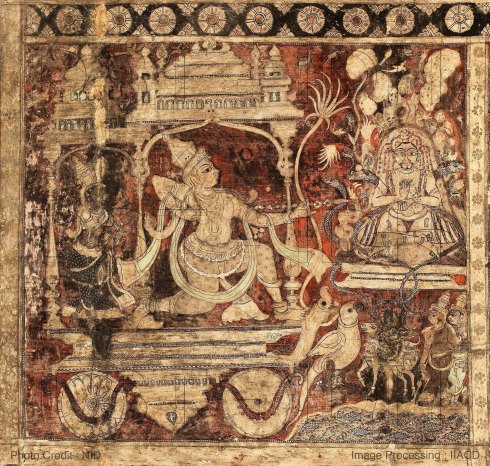
In an earlier post in this space, I had shared some well known samasya pooranam examples from samskrta and some more examples from Kannada poetry. Later, I had also shared some of my own solutions for samasya pooranam questions posted on Padyapaana. Since there were a few more such verses since the last post, I thought rounding them up here.
The next samasyapooranam is about the five arrows of the Love God, Manmatha. It is said that Manmatha carries a bow made of sugarcane, and has five arrows made of flowers. But the problem given here says that Manmatha carries 10 arrows, and not five.
ಮನಸಿಜನ ಬಳಿ ಹತ್ತು ಬಾಣಗಳಿರುವುದೇ ನಿಜವೈ!
Samasya pooranam involves lot of word play. So it is quite possible to turn one thing into another! I used a fact from Saint Tyagarja’s life to complete this verse. Composer Tyagaraja was an ardent devotee of Rama, but married twice in his life unlike Rama. If such a devotee should marry again after his first wife passed away, it should indeed be because the lord of Love should have had another set of arrows, thus making it ten in total!
ಅನವರತದೊಳು ತ್ಯಾಗರಾಜನು
ವಿನಯದಲಿ ಜಾನಕಿಯ ಪತಿಯನೆ
ಕನವರಿಕೆಯಲು ಭಕ್ತಿವೈರಾಗ್ಯದಲಿ ನೆನೆದಾತ;
ಕೊನೆಯುಸಿರೆಳೆಯೆ ಮಡದಿ ಪಾರ್ವತಿ
ಯನುಜೆಯನು ಮರುಲಗ್ನವಾದನೆ!
ಮನಸಿಜನ ಬಳಿ ಹತ್ತುಬಾಣಗಳಿರುವುದೇ ನಿಜವೈ!
It is quite possible to write multiple solutions to the same problem in Samasya Poornam. So here is one more solution to the same problem,where I changed the last line a bit keeping the same meaning.
The Love God Manmatha is said to visit Earth during the spring season , but as we know the spring occurs in different times in the northern and southern hemispheres, he then should have two sets of five arrows- and the following verse is written about these ten arrows of Manmatha.
ಉತ್ತರದಲರೆಭಾಗ ಪೃಥಿವಿಗೆ
ಚಿತ್ತಚೋರ ವಸಂತ ಕಾಲದ
ಲತ್ತ ಹೂಡುವನೈದು ಹೂವಿನ ಶರವ ಮುದದಿಂದ
ಮತ್ತೆ ಪೋಗುವ ದಕ್ಷಿಣದ ಕಡೆ
ಗತ್ತ ಪ್ರೀತಿಯ ಸೊದೆಯ ಹಂಚಲು!
ಹತ್ತುಬಾಣಗಳಿಹುದೆ ಸೈ ಮನ್ಮಥನ ಚೀಲದಲಿ !
After having spent arrows made of lotus, ashoka, mango, blue lily and jasmine flowers during the spring in the northern hemisphere, if Manmatha has to go to the southern hemisphere he must indeed have a second set of these love arrows!
Another problem given on Padyapaana was to complete a verse that ends in the phrase ಮಳೆಯು ಮುದವಾಯ್ತು. By the time I saw the problem, there were already a bunch of solutions. So I had to look for a different type of shower, a meteor shower in this case:
ಕುಳಿರುಗಾಳಿಯ ಮಾರ್ಗಶಿರದಲಿ
ಚಳಿಯ ತಡೆಯಲು ತೊಟ್ಟು ಟೊಪ್ಪಿಯಿ-
ರುಳಿನ ಮೂರನೆ ಜಾವಕೆನ್ನುತ ಕಾದು ಕುಳಿತಾಯ್ತು
ಇಳೆಯ ಹಾದಿಯ ಬಾಲಚಿಕ್ಕೆಯ
ಪಳೆಯುಳಿಕೆಗಳು ಹಾದುಹೋಗಿರೆ
ಹೊಳೆಯುತಾಗಸ ತುಂಬಿ ಲಿಯೊನಿಡ್ಸ್ ಮಳೆಯು ಮುದವಾಯ್ತು!
Leonids meteor shower is seen during mid November every year, and the solution describes how waiting for the meteor shower in a chilly winter night was fruitful with a fabulous display of the meteors in the sky.
I will end with another samasya pooranam, set in Bhamini shatpadi. This was a question given to the audience in an Ashtavadhana in Puttur a few years ago. The line given was
ಹರುಷದಿಂದರ್ಜುನನು ಸಾರಥಿಯಾದ ಕೃಷ್ಣನಿಗೆ
We all know that Krishna was the charioteer for Arjuna during the Mahabharata war. However this line is stating otherwise – ” Happily, Arjuna became the charioteer for Krishna”. Quite interesting indeed.
I ended up writing more than 30 solutions to this question – some of them relating to the final battle of Karna and Arjuna are posted in this link, but will post a couple of lighthearted ones here:
ತುರಿದು ಕಾಯನು ಘಮಘಮೆನ್ನುತ
ಹುರಿದ ರವೆಯುಪ್ಪಿಟ್ಟು ಮಾಡುವೆ
ತರುವ ಸಮಯವು ಬಾಲಕೃಷ್ಣನ ಶಾಲೆಯಿಂದೆನಲು
ಹೊರಟನರ್ಜುನ ಪುಟ್ಟ ಮಗನನು
ಕರೆದು ಮಾರುತಿಯೊಳಗೆ ಕೂರಿಸಿ
ಹರುಷದಿ೦ದರ್ಜುನನು ಸಾರಥಿಯಾದ ಕೃಷ್ಣನಿಗೆ॥
ವಿರಸ ಬೇಡೆಲೆ ಮಾನಿನೀ ನಾ-
ನರಸುತಿಲ್ಲವು ಸುಳ್ಳುಕಾರಣ
ಕರೆಯಬೇಡವೆ ಮಾಲಿಗೇ ಶಾಪಿಂಗ ನಾ ಮಾಣೆ ।
ಹೊರಡಬೇಕಿದೆ ಮಗನು ಟ್ಯೂಷನ್
ತರಗತಿಗೆ ತುಸು ಹೊತ್ತಿನಲೆನುತ
ಹರುಷದಿ೦ದರ್ಜುನನು ಸಾರಥಿಯಾದ ಕೃಷ್ಣನಿಗೆ॥
In the above contemporary solutions, Arjuna is the dad of a lad named Krishna, and drives the boy in his car. In the second one, he is also trying to avoid going shopping in the pretext of taking the child to a class. 🙂
-neelanjana
Image courtesy: Manmatha Vijaya, on the ceiling of Virupaksha temple, Hampi; taken from http://iiacd.org/murals-south-india/#/hampi-virupaksha-temple-ceiling-paintings-interactive-plan
Who hasn’t heard of Kalidasa’s opening verse from Raghuvamsha that shows how inseparable Shiva and Shakti, that goes as follows?
वागर्थाविव सम्पृक्तौ वागर्थ प्रतिपत्तयॆ |
जगतः पितरौ वन्दे पार्वती परमेश्वरौ ॥
(Picture taken from : http://satyamshivamsundaram.blogspot.com/2010/10/art-indian-but-not-in-india.html)
vAgarthAviva samprktau vAgartha pratipattayE
jagataH pitarau vandE pArvatI paramEshvarau
(Veneration to the parents of the world, Parvati and Parameshwara
Who remain inseparable as the word, and it’s meaning )
Here is the Kannada translation of the same verse, which I had written a while ago:
ತಲೆವಾಗುವೆ ನಾ ಶಿವಶಿವೆಗೆ
ಜಗದಲಿ ಎಲ್ಲರ ಹೆತ್ತವರ;
ಬಿಡದೊಡಗೂಡಿಯೆ ಇಹರಲ್ಲ!
ಮಾತಿಗೆ ಬೆಸೆದಿಹ ಹುರುಳಂತೆ
When I was thinking about this verse, I was also reminded of couple of earlier translations about Shiva and Shakti which I had done(You can find them here and here). Then I ended up reading a few more verses about Shiva in the subhashita compilation called “Subhashita Ratna Bhandagara” (This is available on Google Books for those of you interested! Yay! )
Among the verses, I found the following verse very interesting:
च्युतं इन्दोर्लेखं रतिकलहभग्नम् च वलयं
द्वयं चक्रीकृत्य प्रहसितमुखी शैलतनया
अवोचद् यं पश्येत्यवतु स शिवः सा च गिरिजा
स च क्रीडाचन्द्रो दशनकिरणापूरिततनुः ||
chyutAm indorlekhAM ratikalahabhagnaM cha valayaM
dvayaM chakrIkRRitya prahasitamukhI shailatanayA |
avochad yaM pashyetyavatu sa shivaH sA cha girijA
sa cha krIDAchandro dashanakiraNApUritatanuH || (Vidyakara: 47)||
(Original source of the shloka is likely Vidyakara’s compilation called Subhashita Ratna Kosha – who in turn may have taken it from another earlier source )
Here is my translation of this verse in Kannada:
ಇರುಳಿನಪ್ಪುಗೆಯಲೊಡೆದ ಕಡಗವನು ಉರುಳಿ ಹೋಗಿದ್ದ ಎಳೆಯ ಚಂದಿರನ
ಜೊತೆಗೆ ಸೇರಿಸುತ ಬಳೆಯ ಮಾಡುತಲಿ ಗಿರಿಜೆ ಶಿವನೆಡೆಗೆ ನಗುತ “ನೋಡಿಲ್ಲಿ”
ಎನುತ ಬಾಯ್ದೆರೆಯೆ ಅವಳ ಹಲ್ಲುಗಳಕಾಂತಿಯನ್ನೆಲ್ಲ ತನ್ನ ಮೈದುಂಬಿ
ಹೊಳೆವ ಚಂದಿರನು ಜೊತೆಗೆ ಶಿವಶಿವೆಯ ಸೇರಿ ಕಾಪಿಡಲಿ! ನಮ್ಮ ಕಾಪಿಡಲಿ!
(Although it is not a verbatim translation, I hope I have captured the essence of the verse)
The musician/composer G.N.Balasubramaniam, popularly known as GNB passed away on May 1st, 1965. And on this day it is quite appropriate that I am thinking and writing about Shiva-Shakti! GNB was an innovator, and he composed in some ragas that he brought to life. The raga Shiva Shakti was also one such raga. He has a very catchy composition this rare raga:
You can listen to this composition by Smt P Ramaa here in this YouTube video link.
Sometime ago, I had composed a swarajati in this raga, and I thought it was appropriate to share it with the readers on this day of remembering the great GNB:
Please listen to this composition! Feel free to post your thoughts about the composition either on this post or on the MixCloud track.
-neelanjana
Halebeedu is a little town in South Karnataka, famous for it’s twin temple- popularly known by the name Hoysaleshwara temple that enshrines two Shivalingas, called as Hoysaleshwara and Shantaleshwara. The town was the capital of the Hoysala dynasty that ruled parts of Southern Karnataka and parts of Tamil Nadu from 10th to early 14th century AD.
The old name of the town was Dorasamudra (ದೋರಸಮುದ್ರ / दोरसमुद्र). Although popular legend says the name came because of the enormous man made lake (tank) at the entry of the town (ದ್ವಾರ,dwAra), inscription evidence seems to point in another direction. The lake is actually from pre-Hoysala times, and was erected during the Rashtrakuta king Dhruva‘s reign. Dhruva is referred to as Dora (ದೋರ) in many inscriptions. The lake erected by King Dora was naturally called Dorasamudra. The name seems to gone out of vogue, and this place is known as Halebeedu (Old Place, literally). Right now it is not on the UNESCO list of places of world heritage, but may be nominated to the list soon. I consider this to be one of the Seven Wonders of India, nothing less! The temples are maintained rather nicely by the Archaeological Survey of India (ASI).
However, we don’t see any relics of Rashtrakuta times in Halebeedu today. Inscriptions have long gone into some museums! But luckily we are left with several temples of the Hoysala times of which Hoysaleshwara is the largest and grandest. It is quite natural being the capital of the Hoysala country that this site was selected for this magnificent temple. The temple is said to have been damaged during Malik Kafur’s invasion in the year 1313AD. In spite of the damage, it is still the best Hoysala temple, and probably one of the best temple in terms of architecture.
Oh well, today I’m not writing much about the temple architecture – but would focus on the musicians of Halebeedu. The town being close to my hometown, I have visited this place several times and when I was looking at one of the pictures taken during a visit few years earlier, I was surprised to see a specific type of musical instrument in there and was rather intrigued by the looks of it. I wasn’t sure if the picture I had was one of the mutilated sculpture, and hence I could not come to any conclusion based on the picture. So when I revisited the temple few months ago, I made it a point to look at all those instruments and musicians from Halebeedu carefully.
Many of the sculptures that we find on the temple walls are of various Gods and Goddesses – and there are many that depict earthly, regular performing musicians. Hence we can make many inferences about the types of musical instruments being played in South India during those times. Of course, we have descriptions of various musical instruments in different texts of those times, but a visual representation is much better than a text describing anything , Right?
Here you can see a sculpture of Saraswathi – the Goddess of learning. She is normally depicted in a sitting posture, playing a Veena. Veena is a generic term for string instruments and there are different types of Veenas depending on their structure. In this sculpture, you can clearly see how Saraswathi is using the middle and the ring fingers on her right hand to pluck the strings and the fingers of the left hand to play on the fingerboard – which are true to this day on several Veenas in vogue. Due to the angle, we can’t see whether the fingerboard has frets or not. All this very well matches with how a Sitar or Saraswathi Veena is played today ( discounting the fact that these days Saraswathi Veena is played more laying flat rather than being at an angle), but for one important difference. I’ll come to that point when I comment about another sculpture down below. Oh, I forgot to mention that Saraswathi Veena is one of the types of Veenas played today. Other Veenas include instruments such as Sitar, Rudra Veena, Chitra Veena (also called Vichitra Veena) and Mohan Veena ( actually a modified sliding guitar).
I’m not sure if the following picture depicts an earthly musician or a celestial one, but you can seem him playing a Dhakka or a Muraja (a Damaru-like drum instrument). Anyone who has heard any of DVG’s songs on the beauties at the Belur temple ( another Hoysala marvel, I should say) would definitely recall the song ‘naTanavADidaL taruNi’ (ನಟನವಾಡಿದಳ್ ತರುಣಿ ) about the sculpture called murajAmOde (ಮುರಜಾಮೋದೆ ) refers to a danseuse playing this drum in one of the charaNas. This instrument is used even now with Kathakali music, in Kerala and it is called by the name Idakka . (I got this reference from my good friend Sankaranarayanan, Thanks Sankara!) The way the instrument is held by the player in the sculpture almost matches with how the Idakka is played these days. The sculpture is so life-like that you fail to notice that it is made of stone, can easliy take the twisted ropes to be real!
Now the following brings a few important points – Most Hoysala temples are built on a multiple-point star patterned basement. This type of structure provides a very large surface area for a given size of the temple. Apparently individual sculptures were made elsewhere, probably at the sculptor’s workshops and were set in place at the right places in temple walls. Here is one such corner where you see a musician ensemble. The lady on the left is playing a Veena , this time held in a different positon. It is now in a vertical position and you can see the frets clearly. This matches with the position how the Veena was played even as late as early 18th century. Indeed the construction of RudraVeena and the way it is held while playing today, almost matches with what is depicted in here, although the resonator in the sculpture seems to be much smaller than what’s used in these days. The lady on the right is playing a Dhakka – So together they form an ensemble, may be supporting a dancer. Incidentally, on the left side you can see part of another sculpture, which I take it to be a form of Shiva, or a gaNa of Shiva – which also holds a real Damaru, which you can notice is much smaller than the Dhakka, in it’s hand.
Here is another Veena player. The fret-board is depicted very clearly. The way she holds her instrument is very similar to how a Sitar player holds the instrument. Click here to see a picture of maestro Pandit Ravishankar playing his Sitar. Are you surprised?
Another thing I noticed in the Veena in this sculpture and Saraswathi’s sculpture earlier in this post is that the resonator is not seen at all. Now, how such an instrument would sound? I have no clue, but may be I’m missing something.
Here is another interesting instrument. This is called the Naga Veena. Notice the snake like end of the instrument that gives its name. But notice the right hand of the player. He seems to be using a bow of some sort, effectively making it somewhat like a violin. We know that the violin as used in Indian music today was due to Western influence during the early 18th century at Fort St George. But this instrument tells us although the form of Violin may have been new for Indian music, the structure and concept were not.
The following group of sculptures may represent performing musicians of Hoysala times, accompanying a dance. One of them is playing a bell, essential for providing the dance syllables, one is playing a damaru providing the rhythm and one is seen playing the flute, which might have been the oldest musical instrument, not only in India, but for the whole mankind.
With that, let me stop my rant and let you take a good look at these beautiful sculptures once again – Don’t you agree temples such as these are indeed time-capsules of history that help us recreate and appreciate history?
-neelanjana
Most ancient civilizations flourished in river valleys and flood plains. So when the digging for construction of a railway line in Northwestern British India revealed remains of an ancient civilization, archaeologists were not very surprised! Since the first two sites found were Harappa, and Mohen-jo-Daro, in the vicinity of the river Indus (Sindhu) and it’s tributaries, the civilization came to be known as the Harappa civilization or the Indus valley civilization.
Detailed excavations at these sites revealed that these indeed were huge cities with remains of several layers of city living, with the latest layers dated from around 2000 years before Christ, and the oldest, to about 3500 years before Christ.
Detailed excavations at these sites revealed that these indeed were huge cities with remains of several layers of city living, with the latest layers dated from around 2000 years before Christ, and the oldest, to about 3500 years before Christ.
The cities of Mohenjo-daro and Harappa, as well as other smaller sites that were found later on, were very well planned with streets running at right angles, and laid with burnt bricks. The cities and had a sanitary system of well connected drains to carry the waste from every house. The sites from this civilization occupied a vast area spread across in an area that now corresponds to parts of Afghanistan, Pakistan and India. 19th century Indologists and archaeologists postulated that invading nomads from central Asia brought this civilization to an abrupt end, since most the sites showed a decline around about 1800-1500 BC, with no continued habitation in those locations.
As more sites were found by archaeologists, they observed something strange found more and more sites, they found a strange thing. A vast majority of them were in the area that now comprises of the Thar desert, far from the Sindhu (Indus) river system of Punjab, but along a dry river bed, what is now called as the Hakra or Ghaggar river. The Ghaggar is a seasonal stream which flows for a few months and which ultimately dries up in the desert without reaching the sea! This was a perplexing indeed.
For the solution of this problem, we have to go to ancient Indian texts called Vedas. Veda means Knowledge, derived from the verb, vid – to know, are the oldest poems in this world that are still extant. The Vedas, instead of talking about the five rivers of Punjab, spoke about “sapta sindhu” or the seven rivers, and the most important river among the seven was Saraswathi. The Rig Veda called Saraswati the “ Most beloved of mothers, the mightiest of all rivers, and the best among Goddesses.” It is also described as a river flowing from the Himalaya mountains to the ocean. But today, the Saraswathi river is a small tributary to the seasonal Ghaggar.
As early as during early 1800s, archaeologists who had found parts of a dry river beds in the desert had postulated a great river must have flown there. interestingly this river bed they had found is the continuation of the Ghaggar, into which the current day Saraswathi river flows as a tributary.
The width of the dry riverbed is generally more than a mile wide, and at places it is as wide as 7-8 miles. But what was the source of the water to fill this huge river? The current source of river Saraswathi could not have provided that vast amount of water!
Now science comes to the rescue: The satellite imagery from the late 20th century has ascertained these earlier observations. These have also confirmed the existence old river beds belonging to two other major rivers, Yamuna, and Satluj which are now part of the Indus and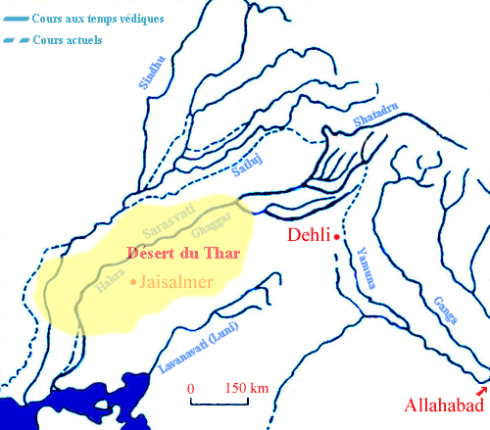 Ganges river systems, that once flowed into the old bed of now dry Ghaggar.
Ganges river systems, that once flowed into the old bed of now dry Ghaggar.
So what caused the drying up of Ghaggar or the historic Saraswathi? Sometime between the 6000 and 4000 years, due to tectonic movements the rivers Yamuna and Sutlej that were the main feeders for Saraswathi changed course.
The glacier fed Sutlej moved westwards, and started flowing into the Indus river. The other glacier fed tributary of Saraswati, the Yamuna started flowing eastward, into the Ganga river instead of Saraswathi. These events thus deprived Saraswathi a perennial water source.
Probably to support this movement of Yamuna is the common belief held in India even today that the river Saraswathi flows as an invisible river, and joins the Ganga and Yamuna at their confluence at Prayaga (Allahabad).
With this river migration understood, we can easily understand why there are far greater number of archaeological sites in the desert along the dry Saraswathi river compared to the Indus river valley. When the rivers migrated, the people living in the Saraswathi river area had to move to newer locations, and they did so. There is no need to bring in any fictitious “nomads from central Asia” to describe a bloody and sudden ending to the civilization. Indeed a study of later archaeological sites shows that several aspects of the these sites were adapted there as well.
Today, the river Sarswathi may flow from the Himalaya all the way to the ocean. It may have become just a small monsoon rivulet. Or if you go by the popular mindset, the river Saraswathi might have become invisible. But the culture of the people lived on it’s banks is still alive and well! For example, its very easy to find artwork from this civilization, that looks almost the same as some of the artworks created by current day craftsmen and artists! This is but one of the many aspects where such parallels can be drawn.
Given all these facts, it truly befits to call this as the Saraswathi-Sindhu civilization rather than Indus Valley civilization or the Harappa civilization!
-neelanjana
(All photo credits belong to their respective copyright holders)
(p.s: Enough material is available on the Internet about the Saraswathi-Sindhu civilization. Then question may arise why this post 🙂 This was a speech I gave at my Toastmasters Club as part of the “Speaking to Inform” advance speaking manual. The project was : The Speech to Inform)

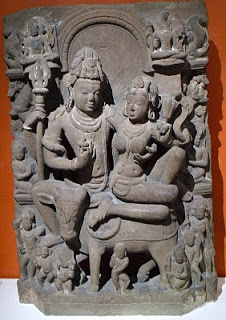
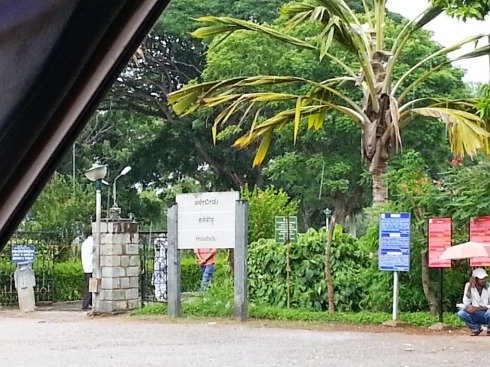
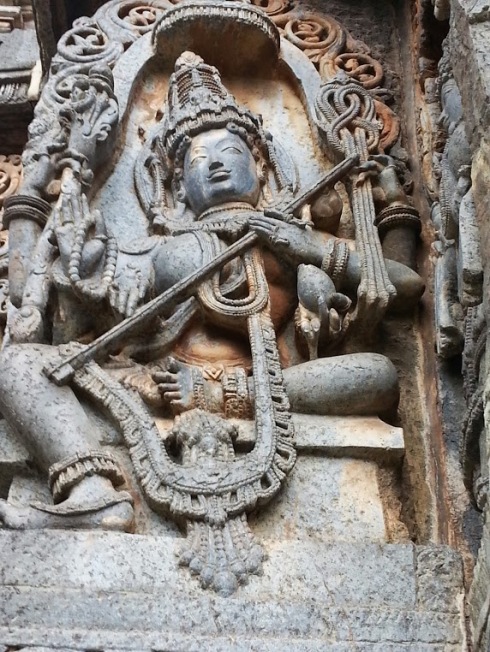
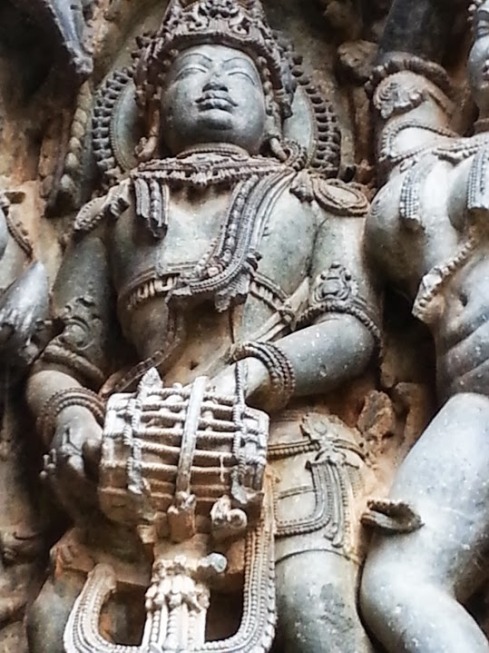
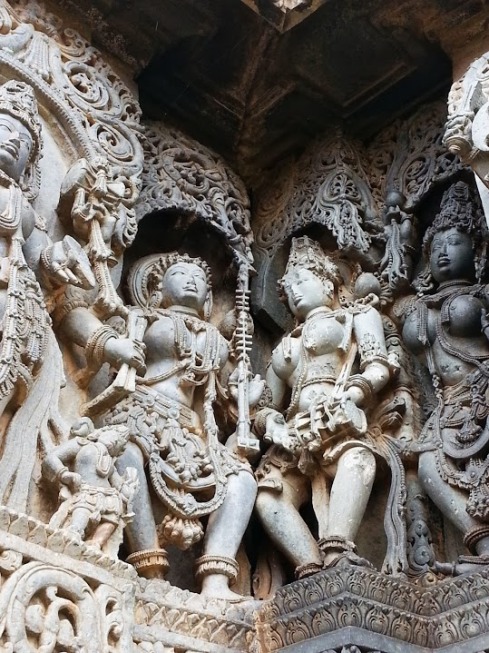
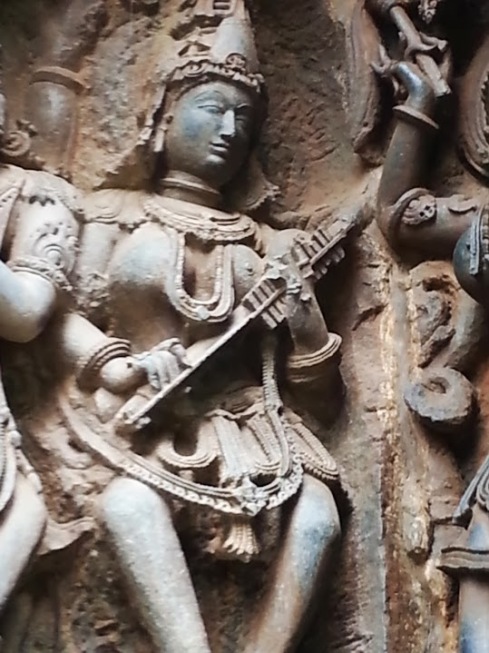
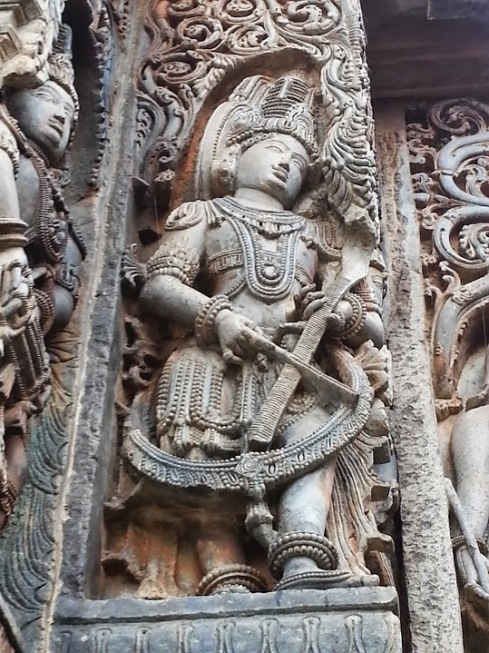
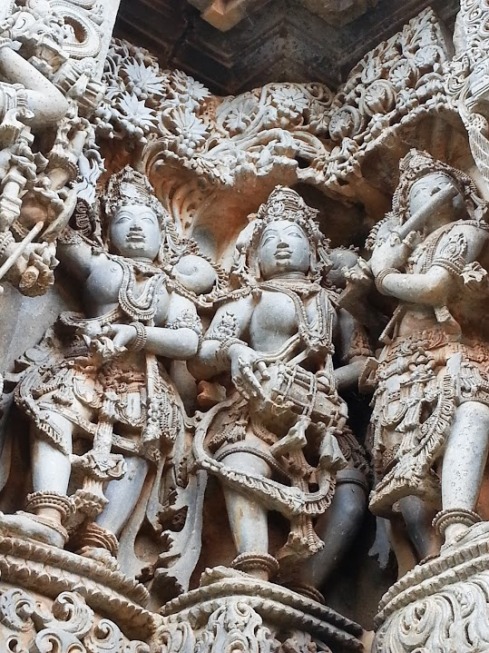
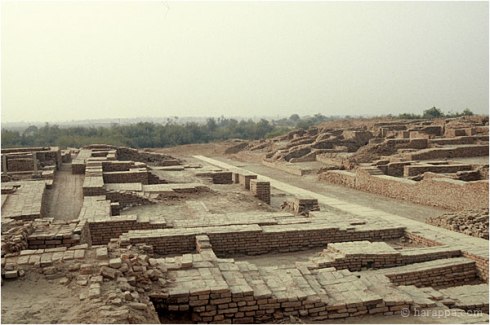
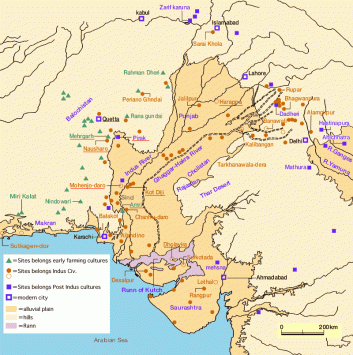
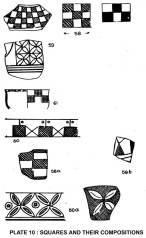
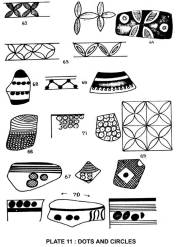


ಇತ್ತೀಚಿನ ಟಿಪ್ಪಣಿಗಳು